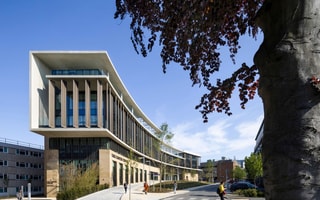From mighty oaks
Peter Ruffell explains how The Royal Marsden’s Oak Cancer Centre is delivering breakthroughs in treatment and care, transforming the lives of cancer patients.

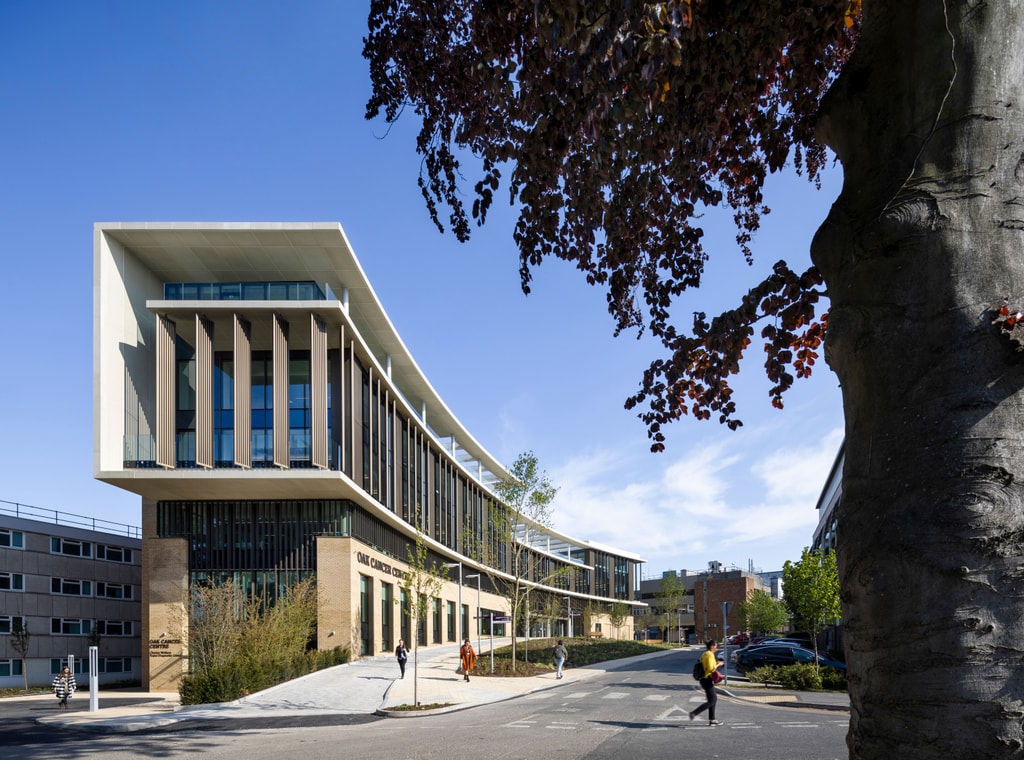
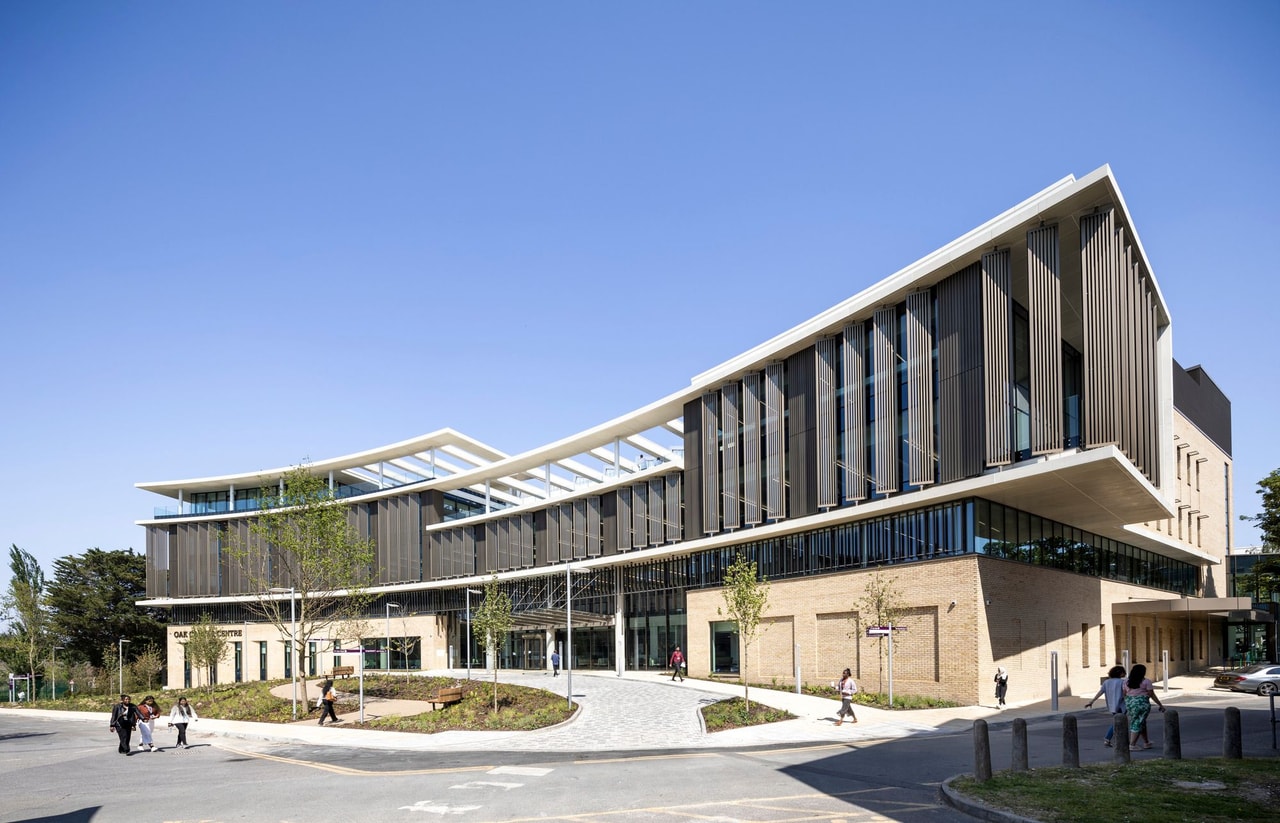
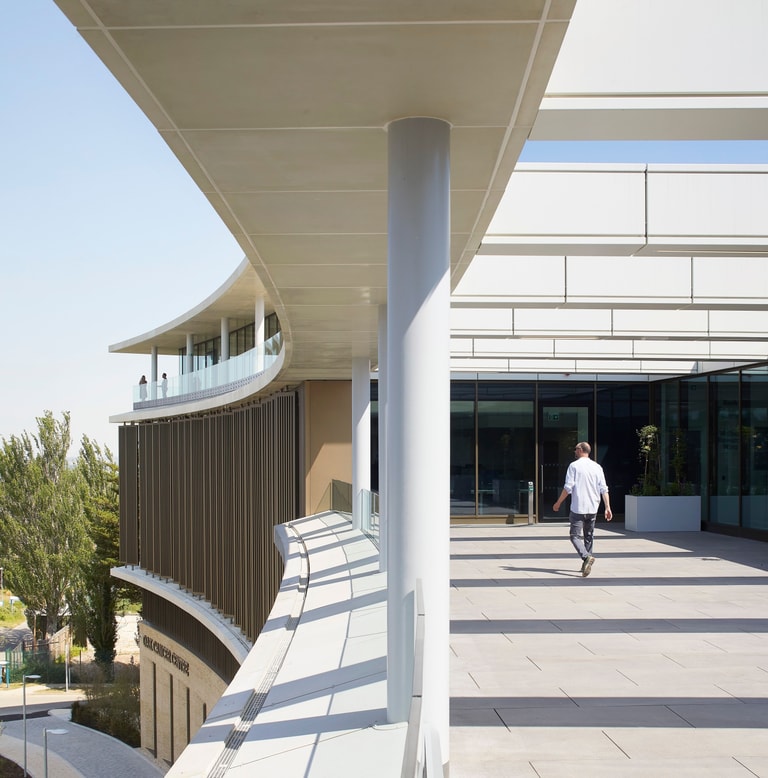
It is a harsh reality that cancer cases continue to rise, so much so that in recent years the number of people diagnosed with cancer has increased significantly from one in three to one in two. It is also true, thankfully, that we have never been better equipped in fighting the disease with survival rates being more than double what they were 40 years ago. This success does however increase the pressure on our already overwhelmed healthcare services, from diagnosis to treatment and then aftercare.
The Oak Cancer Centre in Sutton plays a crucial role in the NHS’s stand against cancer which actively assists in the diagnosis, treatment and aftercare of cancer patients. A year now since His Royal Highness Prince William formally opened the Oak Cancer Centre, over 130,000 patients have visited.
The earlier cancer is diagnosed, the less invasive the treatment is likely to be. The lower ground floors Rapid Diagnostics Centre and Endoscopy suite work together to diagnose a range of cancers at the earliest possible stage. The building is considerate of the high anxiety patients will feel when visiting for testing and utilises the sites natural slope to create a separate entrance, ensuring diagnosed and undiagnosed flows do not cross.
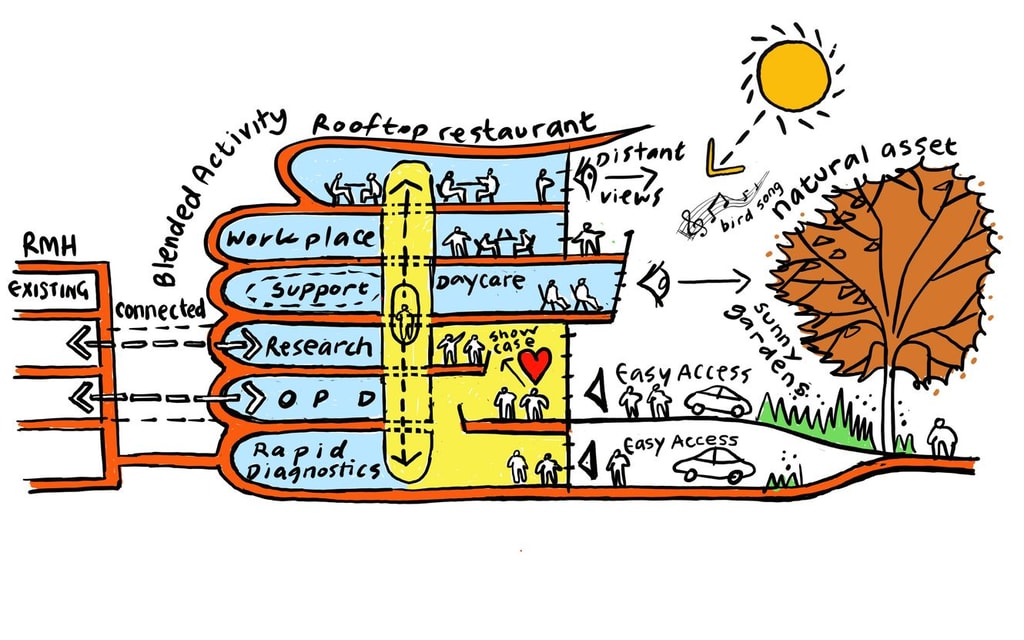
The ground floor is where the main entrance to the building is, leading directly into the central atrium which is intended to serve as an extension to the threshold gardens retained directly out front The atrium is the hospitals main waiting space and primary source of vertical transportation, featuring the oak inspired signature staircase and glazed lift shaft. The design of the building seeks to maximise external views but also views back to the central atrium, using the staircase paired with external views as orientational anchors, enhancing the users sense of placement within the building footprint, aiding in comfort and familiarity. The materiality strikes the balance between warmth but sophistication, to be reassuring and calming. High levels of natural north light soak in from the saw tooth roof onto the warm materials with the landscaped planters embodying the conceptual connections to the outside.
At the ground floor, the new Outpatient and Haematology Outpatients, Phlebotomy & Pharmacy wrap themselves around the atrium with patient treatment taking place within the Day Care department on Level 2. Day Care is considered the jewel in the Oak Cancer Centres crown. Raised up into the permitter tree canopies delivering generous site-wide views with dual aspect full height glazing enhancing the open feeling of the plan form. The department houses 63 chemotherapy infusion bays which array themselves across the buildings gently curved crescent. The bays themselves are spacious enough for patient, companion and clinician to meaningfully inhabit without feeling cramped, tall enough to foster social interaction, but low enough to enable recline and withdraw.
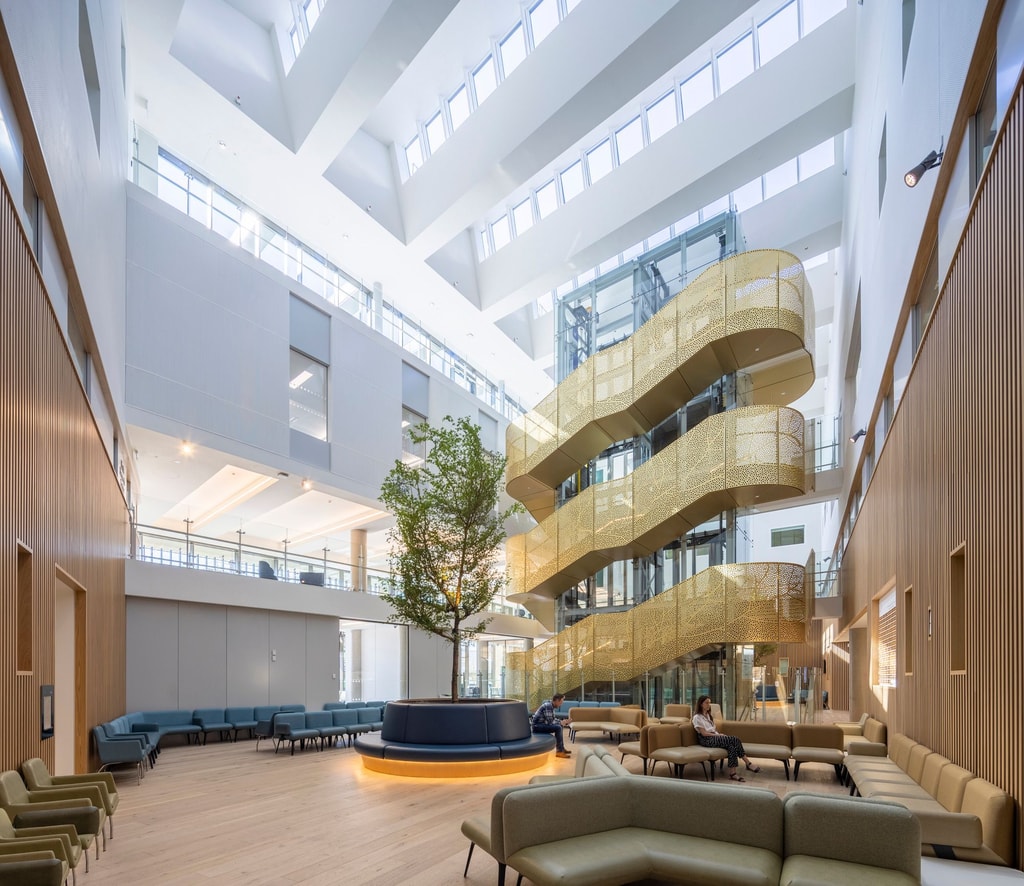
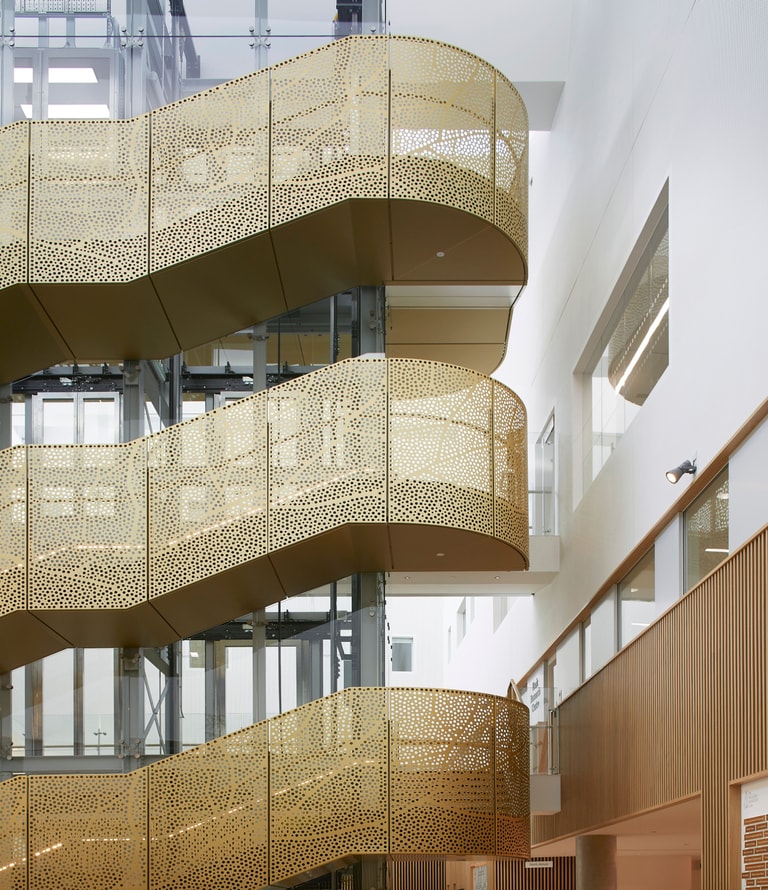
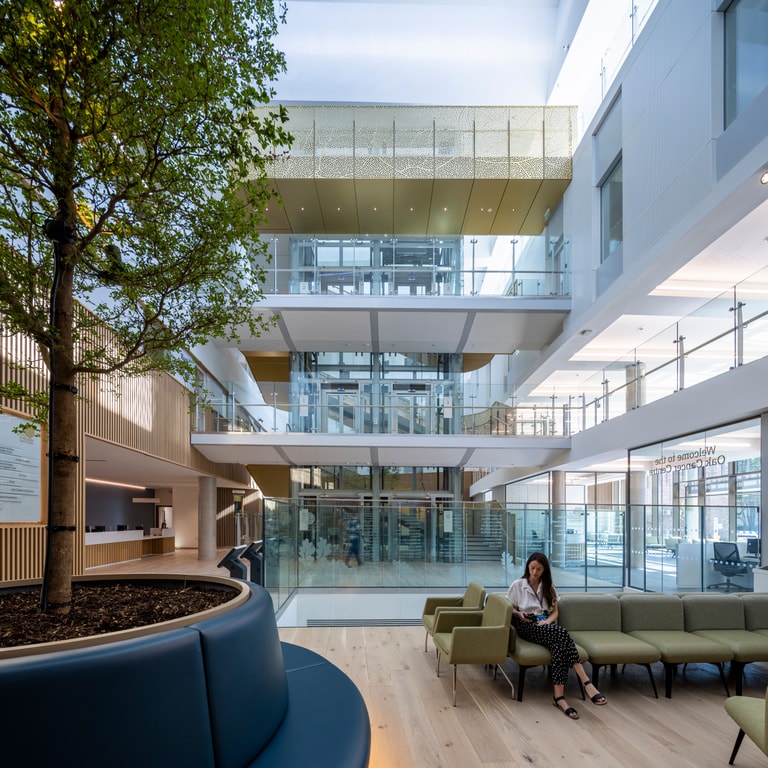
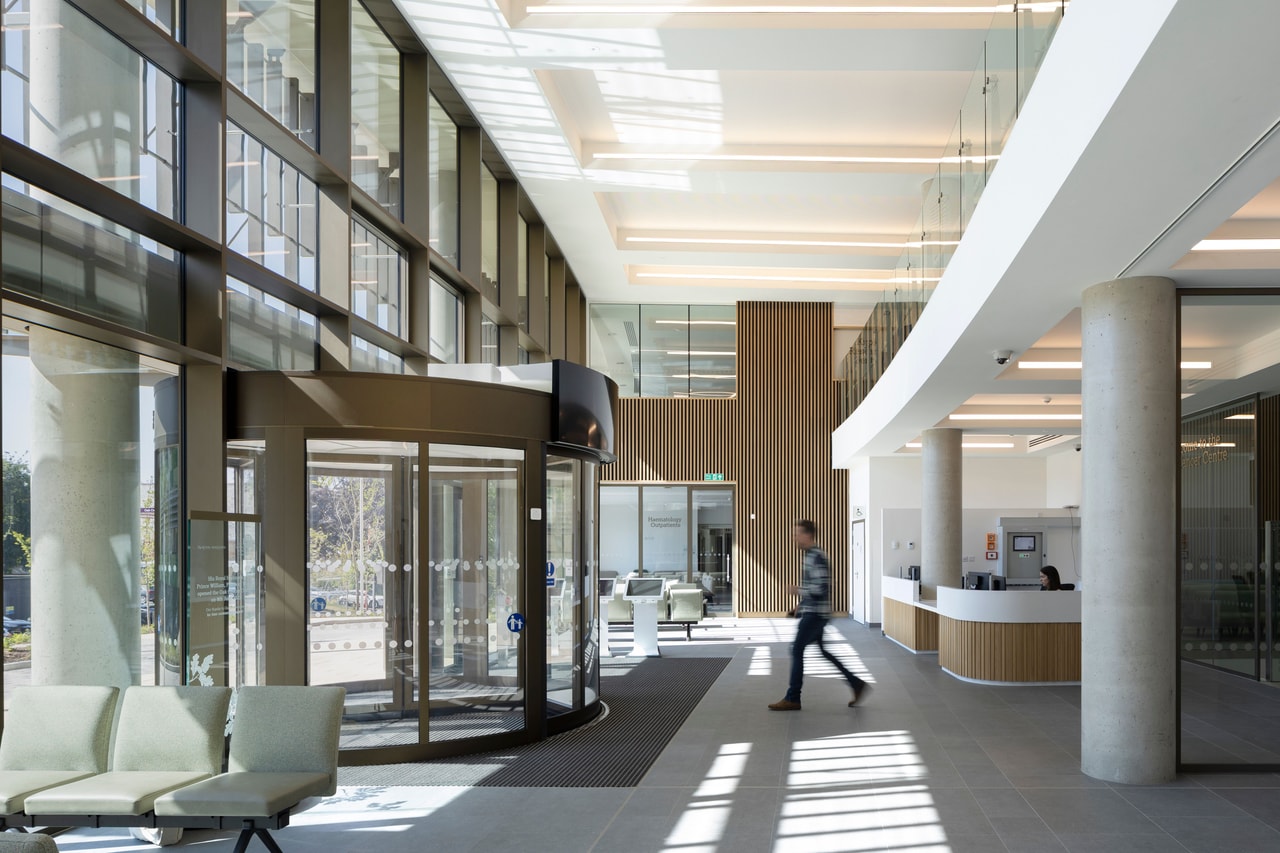
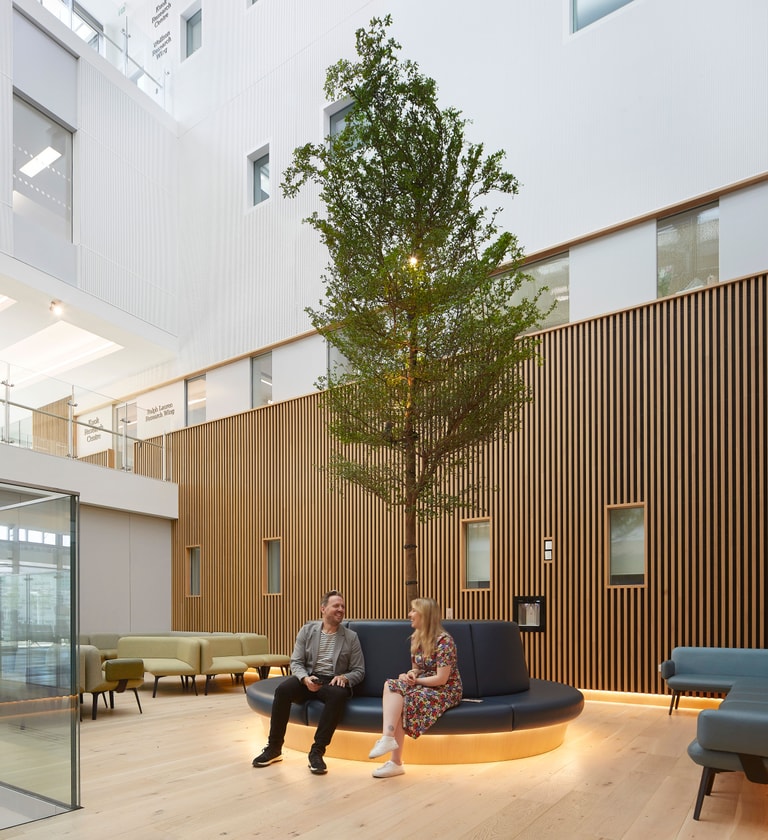
-1330x831.jpg?u=2025-06-19T10:27:19.351Z&w=1024&q=90)
The Royal Marsden works closely with the Institute of Cancer Research, located next door, enabling groundbreaking discoveries to directly impact patient outcomes using a “bench to bedside” methodology. The Oak Cancer Centre was designed in support of this process by meaningfully bringing researchers and clinicians together under one roof, encouraging interaction and collaboration, helping to advance research more effectively. This co-location embodies the inner spirit of both the Royal Marsden, the first hospital of its kind dedicated to the research and treatment of cancer. Before the Oak Cancer Centre was built, researchers were spread out across different buildings, which isolated their work. Now, with 400 researchers and 200 healthcare professionals, all in one place, there's much more interaction. The aim of the Research Centre is to bring together Royal Marsden and ICR researchers into a single facility in order to speed up the spread of research ideas and innovation. The majority of the centre is open plan to facilitate the sharing of ideas with appropriate numbers of offices, soundproofed booths and meeting rooms.
Levels 1, 3 & 4 with a small part of 2, are the non-patient floors which are interconnected by their own private staircase. These floors are made up of Research, Offices, Staff Amenity, meeting rooms and external terraces for both staff enjoyment and fund raising. Typically, what we see in existing estates are staff crammed into back rooms or cordoned off parts of the café. The Oak Cancer centre seeks to disembark from this and provide high quality spaces which will not only attract new and motivate the existing workforce but actively work to recharge and reinvigorate staff to ensure that they perform at their very best; be that researching treatments or delivering them to the patients first hand.
What lies at the heart of this project are The Royal Marsden values. These are very clear and they recognise greatly that a patients experience whilst in hospital plays a vital role in their well-being and directly contributes to towards positive treatment outcomes. This clear vision creates a simple building concept, it’s about harnessing the sites natural assets creating a strong identity with a clear front door, which internally seeks to celebrates the colocation of clinical and research under one roof. The physical proximity between frontline staff, researchers, and patients in the Oak Cancer Centre, will speed up the translation of pioneering research into breakthroughs in treatment and care. In the Royal Marsden’s own words, the Oak Cancer Centre provides a reassuring environment that support the wellbeing, dignity, and privacy of their patients, providing an environment to match their excellent care.
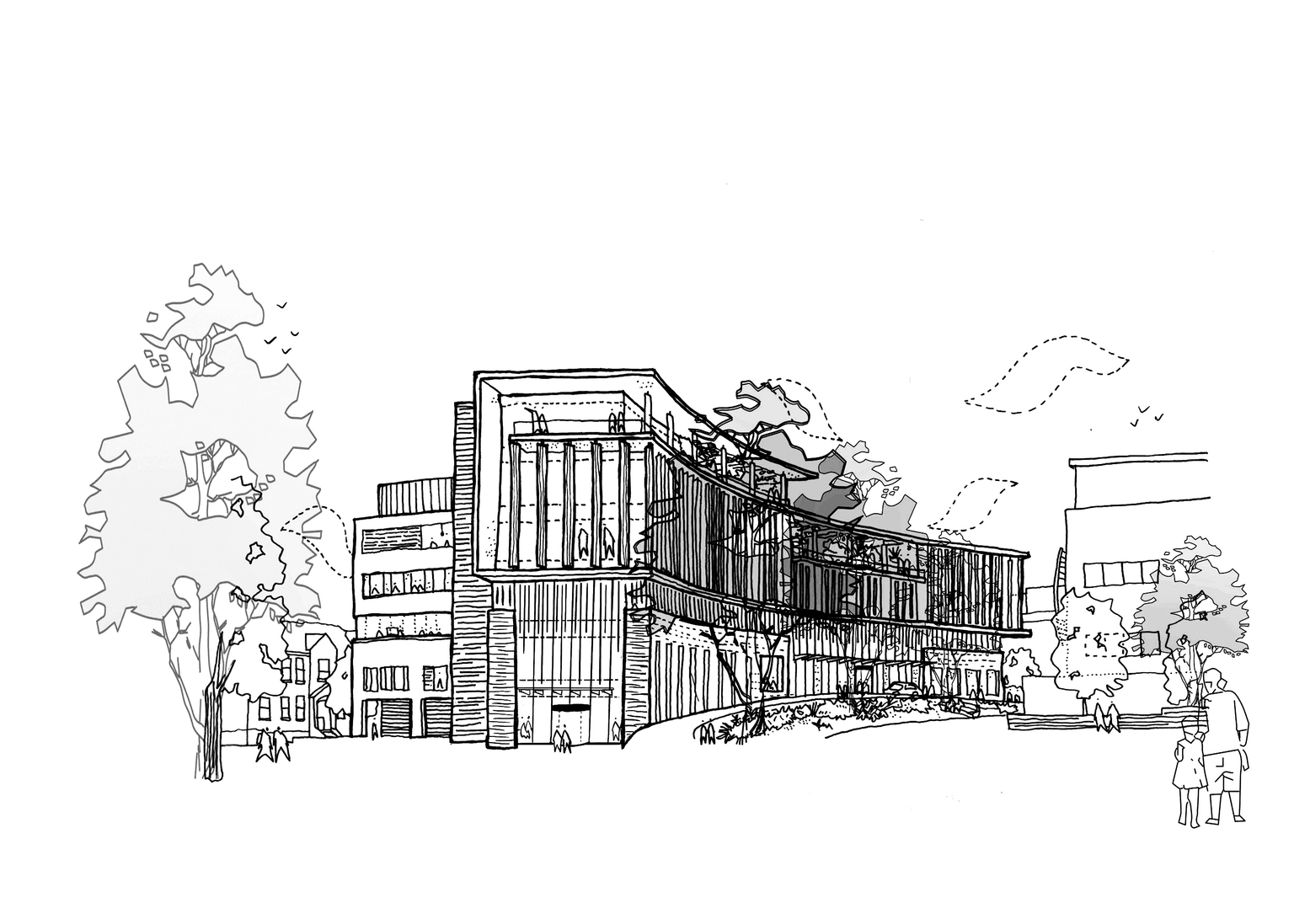
Related Links
Oak Cancer Centre
The new Oak Cancer Centre in Sutton enables clinicians to diagnose cancers at an earlier stage.
The vertical campus
Jonny Day explores how a vertical campus model could offer a new blueprint for MENA's transnational education.
Further Reading
Oak Cancer Centre
The new Oak Cancer Centre in Sutton enables clinicians to diagnose cancers at an earlier stage.
